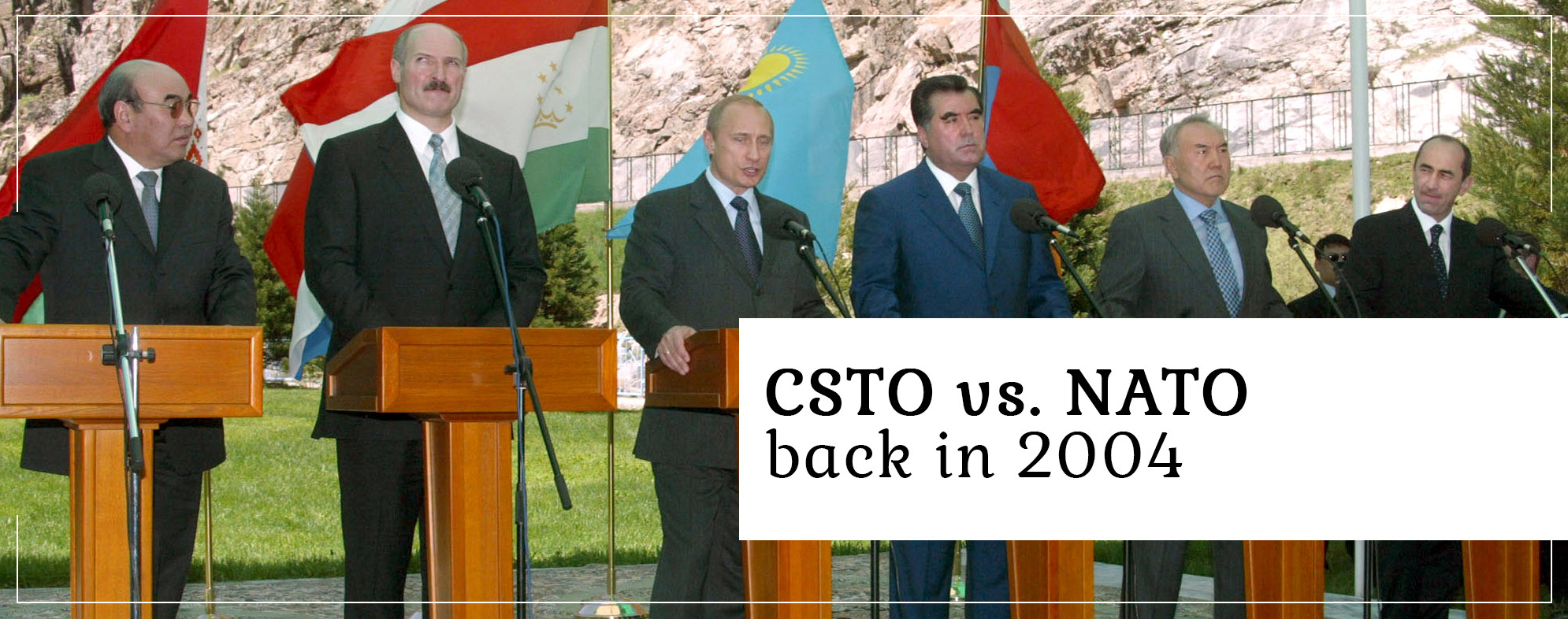
The problems in the Collective Security Treaty Organization (CSTO) did not begin today or yesterday. In this issue of Modern History, we will talk about the tensions between the CSTO members back in 2004.
On June 18, 2004, the presidents of the CSTO member states gathered in Astana. Speaking at the CSTO Council meeting, Armenian President Robert Kocharyan said that the Organization was “calmly and positively” reacting to its member states’ cooperation with NATO. He noted that at the last meeting of the CSTO Council a document on the key areas of cooperation between CSTO and the North Atlantic Alliance was adopted.
Kocharyan said that the document outlined specific mechanisms for CSTO-NATO cooperation in practice, while in reality this cooperation remained merely a good intention.
Besides the reluctance of some CSTO members to cooperate with NATO, the North Atlantic Alliance itself kept cool to the prospects of cooperation with CSTO. In the fall of 2004, U.S. Ambassador to NATO, Nicholas Burns, said in an interview with Mediamax:
“Since every member of the CSTO is also a member of the EAPC, it is difficult to see what value is added by creating new links to that organization.”
In April 2004, Armenian Foreign Minister Vartan Oskanian noted that “as long as we do not raise the issue of our membership to NATO, our cooperation with the alliance does not contradict Armenia’s strategic relations with Russia and our participation in the CSTO.” Such a statement itself indicated that the attitude of most CSTO member states to their colleagues’ deepening ties with NATO could hardly be described as “calm and positive,” as Robert Kocharyan would assert a few months later.

“If it turns out that Georgia and Azerbaijan eventually become NATO members and Armenia does not, obviously this will lead to new dividing lines in the Caucasus,” Vartan Oskanian argued.
A few days before Oskanian’s remarks, the Armenian parliament had ratified the multilateral agreement on the Status of Forces Agreement-PfP SOFA under NATO’s Partnership for Peace program. At first glance, there was nothing special about the ratification, especially since Armenia’s neighbors in the South Caucasus had joined this agreement even earlier: Georgia in 1995 (ratified in 1997), Azerbaijan in 1998 (ratified in 2000).
Just as the Armenian parliament ratified the agreement, the State Duma of the Russian Federation adopted a statement “In connection with the expansion of NATO,” which stated that “the military doctrine of the alliance remains offensive in nature.” In this connection, an article published on April 1, 2004 in the Russian official “Parliamentary Gazette” appeared to be particularly symptomatic:


In May 2004, during a meeting with the CSTO Secretary General Nikolay Bordyuzha, President of Belarus Alexander Lukashenko said that he was “wary” of contacts of some CSTO member states with NATO. According to Lukashenko, NATO troops were stationed on the territory of one of the CSTO member states “under the guise of fighting terrorism.”
The President of Belarus was outraged by the fact that the decision to deploy servicemen of NATO member countries in Kyrgyzstan “was made without the necessary consultations.” “At least, no one asked Belarus, although the agreement provides for it. Imagine if out of the blue we had placed the air force of another bloc on the territory of Belarus. How would our colleagues react? Extremely negatively,” Lukashenko said. He also noted that Belarus was also concerned about the contacts of Armenia and Kazakhstan with NATO, “for which, again, justifications were being provided.”

On the eve of the Astana summit, the Russian leadership also voiced some discontent with the work of the CSTO. “Moscow believes that the mechanisms for aligning the foreign policy approaches of the CSTO member states for responding to new challenges and threats as well as establishing the real functioning of military structures are not effective enough,” a high-ranking Kremlin source told RIA-Novosti.
Photos by REUTERS were used in this chapter.
Ara Tadevosyan



